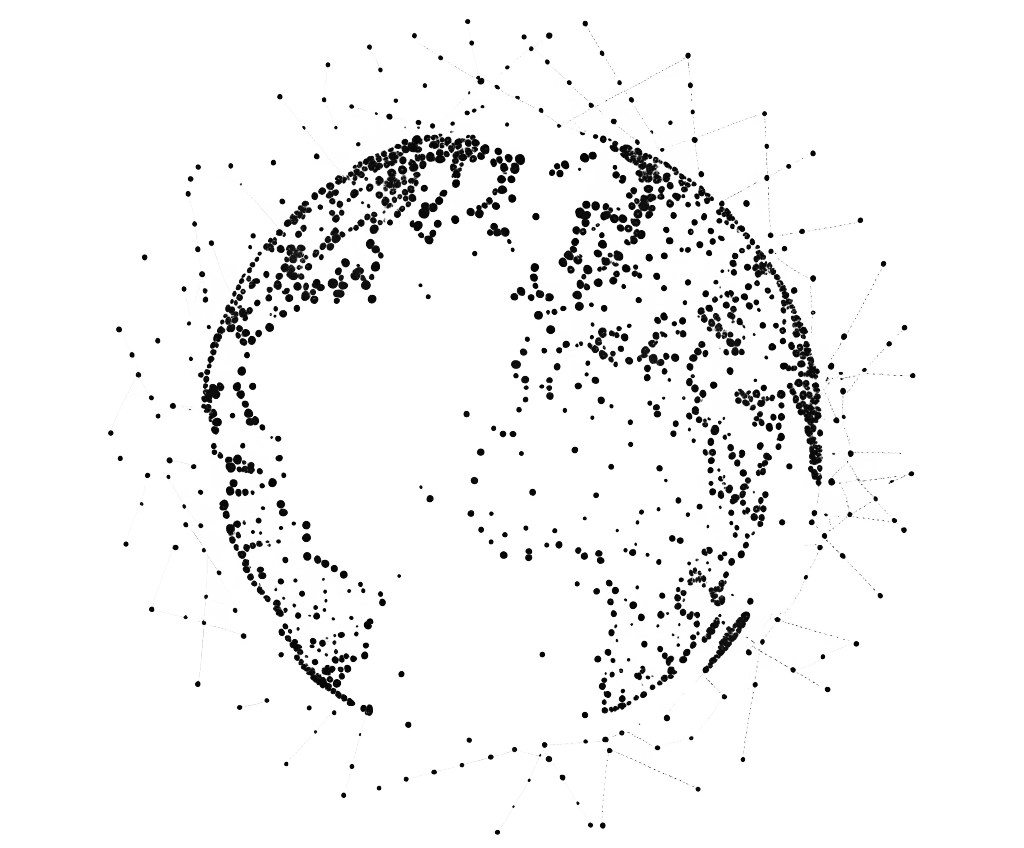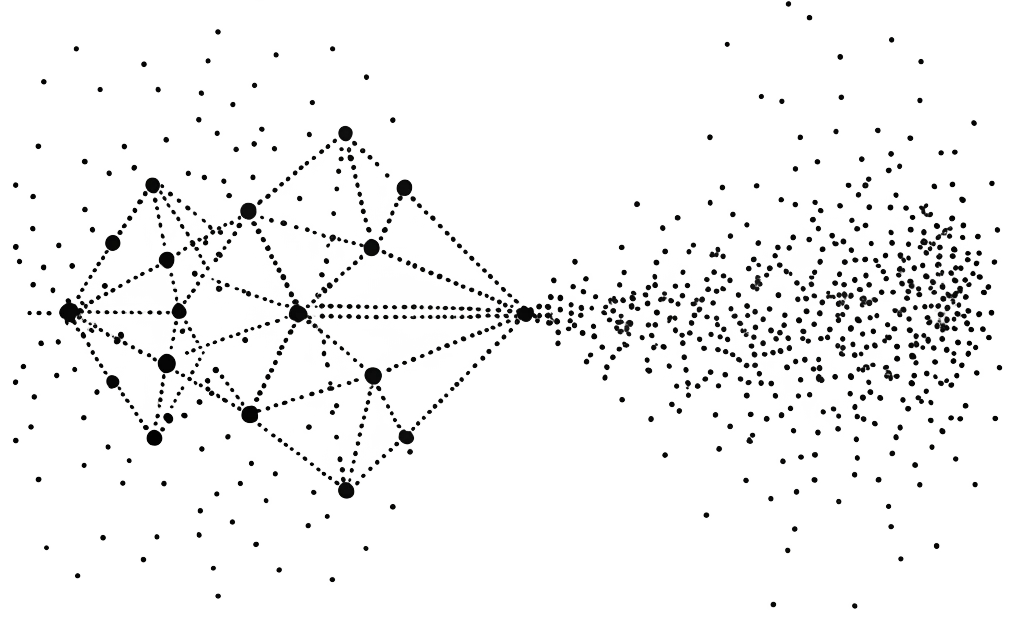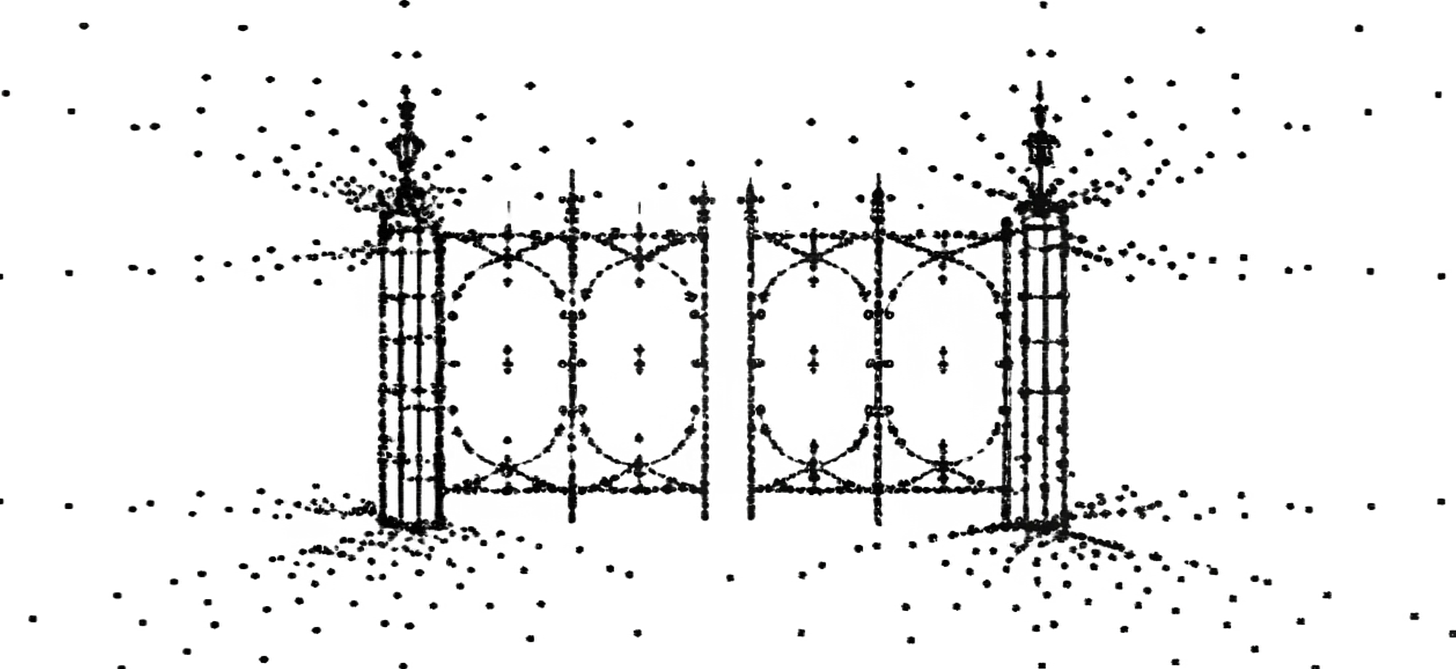The Last Gatekeepers
What Role Do Universities Play When Intelligence Is Everywhere?
Ikram Babs-Lawal, 14, taught herself machine learning through freeCodeCamp before launching a nonprofit to train youths in tech and entrepreneurship. Amie Hanbury, burned out from retail, earned a Google Career Certificate—cheaper than a textbook—and landed a job without a degree. OpenAI Academy equips developers in middle-income countries to tackle challenges in healthcare, agriculture, education, and finance. Meanwhile, GraphCast accurately predicted Hurricane Lee’s landfall in Nova Scotia days ahead of traditional forecasters.
These aren’t anomalies; they’re signals—patterns of a new reality where intelligence is everywhere, even as its benefits remain unevenly distributed.
For centuries, universities controlled who learned, who taught, and who gained credibility. Their authority came from organizing intelligence within formal institutions. But intelligence is everywhere—abundant yet unequally distributed.
This debate is about more than education. It’s about distributed power—and, more so, distributed progress.
Universities built their influence on scarcity—gatekeeping access to knowledge, credentials, and expertise. Selective admissions, specialized fields, and the prestige of degrees weren’t just signals of quality; they were mechanisms of control.
That model appears formidable, yet power rooted in exclusivity can prove fragile—AI won’t just accelerate knowledge but expand who creates it, shifting power from gatekeepers to a diverse mix of actors with competing aims in a decentralized system.
In this new ecosystem, what positions will universities stake out?
Progress and Backlash: Gatekeeping Through Eras of Globalization
Each major wave of technology—whether the printing press or the rise of the internet—reshaped how knowledge is created and shared. But AI poses a deeper challenge: it not only democratizes access but also competes with human cognition itself.
In The Ages of Globalization, Jeffrey Sachs describes how institutions evolve in response to new knowledge ecosystems. The printing press forced universities to redefine their role, moving from gatekeepers of manuscripts to curators of intellectual debate. The early internet eroded their control over content distribution, making them brokers of credibility rather than sole arbiters of knowledge.
But AI is different.
It doesn’t just disseminate knowledge; it generates, evaluates, and refines it autonomously. Look at how the OECD recently changed it’s definition or the Brussels-Washington Consensus About the Legal Definition of Artificial Intelligence.
Universities will need to rethink their strategic position in a decentralized world.
Your Strategy Needs a Strategy
How universities interpret their environment determines their strategy—but most still act as if they’re competing in a stable, predictable world. The reality is messier. Multiple strategic landscapes overlap, demanding different playbooks.
In Age of Revolutions, Fareed Zakaria reminds us that technological upheavals don’t just change industries; they reshape institutions. Universities can’t assume they’ll absorb AI as they did past innovations.
Misreading the environment means choosing the wrong one. Some universities will cling to tradition, betting that prestige will buffer the impacts of technological disruptions. Others will scramble to adapt, risking irrelevance if they move too slowly—or corporate takeover if they pivot too recklessly. A few will dare to be visionaries or shapers, placing high-stakes bets that could redefine their role in knowledge production—with consequences just as large as the rewards.
To riff on Mark Twain, reports of the university’s death are often greatly exaggerated—but 2025 may be a year of reckoning when past missteps come due—a year where financial pressures, political shifts, and new competitive forces converge.
Higher education has already transformed twice—first, after the Industrial Revolution, then with the Great Society expansion. Are we entering the next transformative era—one where universities must rethink their models, roles, and place in the economy?
Your answer to this question indicates your strategy.
The Third Sector of Higher Education: A Growing Alternative
The third sector of higher education—spanning EdTech startups, NGOs, and industry-led programs—isn’t just growing—it’s filling a vacuum that universities created.
While some chase profit and others serve the public good, all share a defining trait:
They operate outside legacy structures, challenging universities’ hold on education.
Demand for their services will only increase.
The global EdTech market, valued at $123 billion in 2023, is projected to exceed $600 billion by 2027—an expansion propelled by learners looking for flexible, career-aligned options.
Prestige and Progress
For decades, incentives have driven universities to prioritize rankings, selectivity, and prestige-based competition. These incentives favored consolidating status over distributing progress.
Meanwhile, demand for affordable, career-aligned, and scalable education surged worldwide.
The result?
A widening gap between what universities provide and what learners need—a gap that the third sector is rushing to fill. As this new educational landscape continues to expand, universities must reckon with the mismatch they helped produce.
Where the Third Sector is Filling Gaps
Scalability & Cost
Coursera and edX make elite education available to millions, with Coursera boasting over 148 million registered learners. Through partnerships with 350 universities and corporations, the platform provides degrees at a fraction of typical tuition—especially in emerging economies, where the need for affordable credentials is growing fastest.
Emerging economies now lead GenAI adoption, with India, Colombia, and Mexico accounting for more than 50% of course enrollments in 2024. Government initiatives—like Saudi Arabia’s Human Capability Development Program—further accelerate this shift.
Lifelong Learning & Upskilling
In response to the demand for career-aligned credentials, upskilling models offer debt-free paths to high-paying jobs. Outlier.org, honored by TIME as one of the year’s best inventions, provides for-credit courses at $400—roughly one-sixth the standard cost. With backing from the University of Pittsburgh, these credits transfer easily, and Amazon funds them for employees, making education free.
Alternative Credentialing
Google and IBM now validate job-ready skills without requiring a four-year degree. Over one million people worldwide have completed Google Career Certificates, and a hiring consortium of 150+ companies considers these credentials equivalent to traditional degrees for entry-level roles.
Access is not Enough
Access alone doesn’t ensure learning. MOOCs draw millions, but completion rates often fall below 10%.
Some might fear a two-tiered system – but our system of higher education is already hierarchical–as Simon Marginson has pointed out, massification doesn’t necessarily reduce inequality—in fact, it often does the opposite.
Many third-sector programs emphasize short-term employability at the expense of deeper intellectual engagement.
Universities still matter precisely because they balance the practical with the profound. They anchor our knowledge ecosystem, safeguarding against a world where education becomes purely transactional. The question going forward is how they’ll collaborate—or compete—with this burgeoning sector.
Cultures of Progress
Economic historian Joel Mokyr argues in A Culture of Growth that intellectual progress doesn’t emerge from knowledge alone but from cultures willing to challenge authority, experiment, and adapt. When institutions grow too rigid, knowledge doesn’t vanish—it migrates to more dynamic environments.
The backlash against Cal State’s partnership with OpenAI reflects this tension. AI isn’t just a tool; it’s a shift in who controls knowledge and how it evolves. For some students and stakeholders, partnering with OpenAI signals agility. For others, it’s a rushed decision that bypasses faculty governance.
Mokyr’s clarifies what’s at stake. Centralized cultures, like 18th-century Austria, prioritize control and deliberation but often react too slowly to technological change. Decentralized cultures, like 18th-century Britain or the Dutch Republic, thrive on market-driven experimentation, forging ahead even amid uncertainty.
Cal State represents the slow-moving, deliberative model. Faculty want reform yet resist top-down decisions. Meanwhile, Arizona State, the University of Tokyo, and the National University of Singapore see AI as a competitive advantage.
But the real shift is happening elsewhere—in a decentralized, market-driven landscape reminiscent of the Dutch Republic, where EdTech startups like the Minerva Project blend elite university education with a globally distributed, AI-enhanced learning model, mission-driven initiatives like Africa’s ALX scale AI-powered workforce training, and learning ecosystems like HolonIQ’s global upskilling networks bridge education and industry through data-driven insights.
It’s not CSU versus ASU. Both navigate a world where a third sector of higher education challenges the rules of traditional universities.
Move too slowly, and universities risk irrelevance. Move too quickly, and they risk becoming nodes in a corporate knowledge economy they no longer control.
Complement or Substitute? Why Not Both?
Economists often categorize new technologies as complements or substitutes. In higher education, the AI debate tends to follow that script: Is ChatGPT merely an enterprise tool to complement existing systems, or will it substitute core academic functions, reshaping curriculum, learning, and research?
Both framings miss the point.
AI is both a complement and a substitute—but not in predictable ways.
As the UNESCO Futures of Education report report suggests, institutions must ask:
What should we continue?
What should we abandon?
What needs reimagining?
Historically, universities integrated new technologies—printed books, digital libraries, online platforms—as complements that extended their mission. But the Intelligence Age is different. AI doesn’t merely disseminate knowledge; it generates knowledge. That changes everything.
As Yuval Noah Harari observed:
“It’s the first technology ever that can create new ideas. You know, the printing press, radio, television, they broadcast, they spread the ideas created by the human brain. They could not create a single new idea”
AI reshapes the knowledge economy in two ways at once. Where it enhances research and automates routine tasks, it acts as a complement. Where it challenges experts or replaces jobs, it operates as a substitute, rewriting the rules of academic prestige and productivity.
By building a new ecosystem of intelligence, AI compels universities to make deliberate choices. They must decide where to lead, where to integrate, and where they risk being left behind.
AI as a New Mode of Intelligence
As Michael Levin notes, intelligence takes many forms. AI doesn’t merely imitate human thought; it introduces entirely new ways of processing knowledge, challenging the bedrock of traditional academic structures. Universities, therefore, must embrace a future where human and machine cognition co-evolve.
Yet much of the current rhetoric surrounding AI obscures what makes human intelligence unique—often reducing it to task optimization. AI may excel at quickly delivering rote knowledge, but it does not think, reflect, or understand in a distinctly human sense. This gap calls for greater ethics, collaboration, and rigor in its implementation.
This is where universities matter most.
Personalized learning systems can automate foundational instruction, but only universities can foster interpretation, synthesis, and judgment—facets of intelligence that AI cannot replicate. Rather than compete with AI, universities should focus on providing the depth of inquiry and mentorship that make knowledge truly meaningful.
AI as a Scientific Force
AI’s role in knowledge creation is expanding at an unprecedented pace. Google recently released their vision for a “golden age of scientific discovery”, and Dario Amodei wrote an extended essay titled “Machines of Loving Grace” the acceleration of new AI capabilities might invigorate entire fields of study. The Stanford AI Index Report echoes this sentiment, highlighting breakthroughs from GraphCast’s precision in weather forecasting to GNoME’s innovations in material discovery.
In 2024, Demis Hassabis, John Jumper, and David Baker won the Nobel Prize in Chemistry for AlphaFold, solving a half-century-old challenge in protein structure prediction.
Crucially, this landmark work developed outside traditional university walls, signaling a profound shift in where paradigm-shifting discoveries emerge.
If universities overlook such transformations, they risk becoming the last gatekeepers—clinging to traditions that no longer define the center of the evolving knowledge economy.
Groundbreaking advances don’t simply unfold on their own. They demand metascience—the deliberate design of institutions and epistemic frameworks that nurture long-term inquiry.
The question isn’t whether universities will survive. They will. It’s the roles each one stakes out in the new knowledge ecosystem
The Last Gatekeepers
Universities have long been gatekeepers, their influence grounded in scarcity. In a multipolar world, such gatekeeping will continue, but it will never again wield the power it once did.
Course materials, research frameworks—entire knowledge systems—are now abundant.
Their relevance lies in whether they join a system of distributed progress—co-creating knowledge, sharing credentials, and recognizing authority in more fluid ways.
AI is poised to flood the world with limitless content, yet without structured learning, that torrent dissolves into noise. Universities, if they choose, can be more than just gatekeepers of prestige. They can be gatekeepers of insight, shaping intellectual communities in ways no algorithm can.
Joel Mokyr and Leslie Valiant both remind us that scientific revolutions don’t blossom in isolation. They require institutions capable of fostering rigorous cultural foundations—debate, verification, and the careful refinement of ideas.
History suggests universities won’t disappear, but their future influence depends on how actively they shape learning, research, and credentialing.
The gravest mistake is confusing legacy with future. Some institutions will adapt, embedding themselves in a networked ecosystem of AI labs, third-sector innovators, and corporate R&D—together driving genuine progress. Others will cling to old rituals, mistaking metrics of prestige as measures of progress.
Predictions are risky. Take this as a warning instead.
The world no longer needs gatekeepers of scarcity. It needs universities that recognize intelligence is everywhere—and rise to meet it.
Those who fail to do so risk becoming the last gatekeepers, watching over doors no one seeks to enter.







